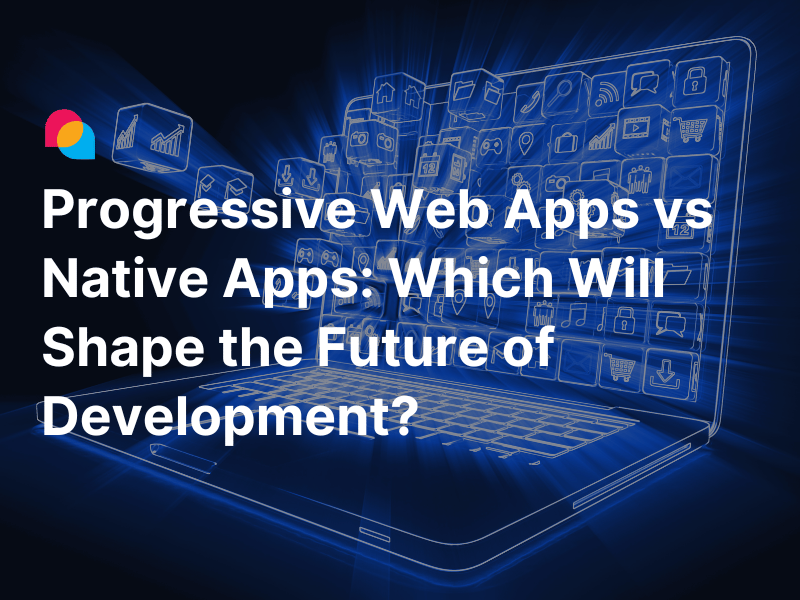Why Cloud-Native Is Your Business's Future
Welcome to the world where "cloud-native" isn't just a buzzword; It's a revolutionary approach that's reshaping how businesses operate, innovate, and compete in an increasingly digital landscape. As we dive deep into this transformative world, we're going to unravel why embracing cloud-native methodologies isn't just a smart choice; it's essential for your business's future success.
Embracing the Shift: What Cloud-Native Means for Modern Businesses
Think of cloud-native development like switching from a clunky old desktop to a sleek, high-powered laptop that updates seamlessly. For modern businesses, transitioning to cloud-native systems means adopting an environment that's designed to leverage the full potential of cloud technology; Think scalability, flexibility, and resilience. It’s about building applications specifically for the cloud, not just moving old ones there.
The Promise of Resilience: Why It Matters
In today’s fast-paced market, resilience is the name of the game. Cloud-native development promises just that; a robust framework that keeps your services up and running, even when the unexpected hits. This resilience is a major draw, providing businesses with the assurance that they can handle challenges and disruptions with minimal impact.
The Business Benefits of Cloud-Native Development
The Competitive Edge of Going Cloud-Native
Transitioning to cloud-native isn't just a technical upgrade; It's a strategic move that gives businesses a significant competitive edge. How? By innovating faster with microservices. These small, independent services allow for quicker updates and improvements, which means you can respond to market changes faster than ever.
Scaling with ease is another superpower of the cloud-native approach. Thanks to the scalable nature of cloud environments, businesses can expand resources only when needed, making scalability both efficient and cost-effective.
Cost Efficiency and Performance
One of the most compelling reasons to go cloud-native is the cost efficiency achieved through containerization. Containers are lightweight, use fewer resources than traditional or virtual machines, and they start up quickly. This means you can do more with less, cutting operational costs significantly.
Moreover, boosting performance is a direct benefit of modern architectural approaches like using microservices and containers. These technologies provide improved performance capabilities over monolithic systems, ensuring that applications are not only faster but also more reliable.
Key Components of Cloud-Native Development
Simplifying Complex Systems with Microservices
In the realm of cloud-native development, microservices play a starring role. Imagine breaking down a complex, sprawling city into manageable, nimble neighborhoods. That’s what microservices do to traditional, bulky applications. They split them into smaller, independent pieces that work together seamlessly. This non-technical overview should help you grasp that microservices aren't just technical jargon; they're a practical way to fuel innovation and agility within your teams.
Microservices aren't just about making things smaller; they're about making things smarter. By fueling innovation and agility, microservices allow teams to update components without overhauling the entire system, thus delivering new features and fixes at a pace that old-school monolithic systems can’t match.
Containers and Orchestration: What You Need to Know
Containers might sound like tech speak, but let’s simplify it: think of them as lightweight, portable packages of software that contain everything needed to run a piece of software, including the code, runtime, and libraries. This simplicity and portability make containers a cornerstone of cloud-native development.
Then comes orchestration, which might conjure images of a symphony conductor. Essentially, that’s what tools like Kubernetes do; They manage and scale containers with precision, ensuring they run where and when they should, just like a conductor ensures every part of the orchestra plays in harmony.
Examples of companies that have successfully implemented cloud-native technologies, particularly focusing on microservices and container orchestration:
- Netflix: As one of the early adopters of cloud-native principles, Netflix has utilized microservices and containers to handle its vast scale of operations and to improve the reliability of its streaming service. Each component of their service, from the user interface to the recommendation algorithms, is built as a separate microservice, allowing them to update parts of the system independently and ensuring high availability and resilience.
- Amazon: Amazon has leveraged microservices to transform their technical infrastructure, which originally consisted of a large, monolithic application. By adopting microservices, Amazon has improved the scalability and performance of its e-commerce platform, allowing them to deploy updates faster and more frequently without affecting the entire system.
Streamlining Operations
Enhancing Development with Continuous Integration and Deployment
Continuous Integration (CI) and Continuous Deployment (CD) represent the magic of automation in the cloud-native world. CI/CD allows development teams to automate testing and deployment, which means they can introduce changes more frequently and with fewer errors. Think of it as having a high-speed production line that ensures quality and speed every step of the way.
This process not only revolutionizes product updates but also dramatically reduces the chances of significant errors, ensuring that updates are more about innovation and less about damage control.
Security and Compliance in the Cloud
Navigating cloud security can seem daunting, but with the right strategies, it’s perfectly manageable. Key considerations include understanding where your data resides, who has access to it, and how it’s protected. Implementing robust security practices isn’t just about avoiding risks; it's about building a foundation of trust with your customers.
Effective cloud-native security involves everything from identity and access management to response strategies for potential breaches. This proactive approach ensures that security is a cornerstone, not an afterthought.
Some real-world examples demonstrating the effectiveness of Continuous Integration (CI) and Continuous Deployment (CD) in cloud-native environments:
- Etsy: Etsy's shift to a robust CI/CD pipeline allowed them to scale their deployment capabilities dramatically. Initially, deployments were infrequent and high-risk, but after integrating CI/CD practices, Etsy was able to increase deployment frequency to several times a day, improving their ability to innovate and respond to market demands quickly.
- Target: Retail giant Target adopted CI/CD practices as part of their cloud-native transformation. This move was aimed at enhancing their ability to deploy software changes more frequently and reliably. The implementation of CI/CD not only accelerated their software delivery cycles but also significantly reduced downtime and deployment-related errors.
- Huawei: Huawei employs a cloud-native CI/CD pipeline that supports their massive, globally distributed development team. This pipeline enables consistent environments from development through to production, reducing integration issues and speeding up release cycles. Their approach has allowed them to handle complex software updates seamlessly across multiple products and regions.

Overcoming Challenges in Cloud-Native Development
Addressing Common Pitfalls
Every innovation comes with its set of challenges, and cloud-native development is no exception. Recognizing and identifying common obstacles is the first step toward overcoming them. These challenges often include managing service dependencies, handling data consistency across services, and dealing with the complexity of managing multiple moving parts in a distributed system.
From a real-world perspective, companies find that adopting cloud-native practices often requires overcoming significant learning curves. This includes getting teams up to speed with new technologies such as Kubernetes, containers, and microservices. For instance, Kubernetes, while powerful in managing containerized services and dynamic scalability, presents its own set of challenges such as its complex setup and maintenance requirements.
Best Practices for a Smooth Transition
Preparing your team for cloud-native technologies involves more than just technical training. It's about fostering a culture that embraces change and innovation. Critical steps for successful implementation include continuous education and practical training, ensuring that your team not only understands cloud-native technologies but also adopts a mindset geared towards continuous improvement.
A smooth transition also involves strategic planning and alignment with business goals. This ensures that the move to cloud-native technologies is not just a technical upgrade but a strategic enhancement that supports broader business objectives.
Advanced Trends Shaping Cloud-Native Development
The Role of Serverless Computing
As we delve into advanced trends, serverless computing stands out for its impact on business efficiency. Serverless computing allows developers to build and run applications without managing servers. This means they can focus more on code and less on the administrative tasks associated with traditional server-based setups.
Exploring the impact of serverless reveals how businesses can reduce operational costs and increase scalability. When considering serverless in your strategy, evaluate how its on-demand functionality can streamline operations and potentially transform your cost structure.
Leveraging AI and Machine Learning
Integrating AI and machine learning into cloud-native applications is not just a trend; it's a transformative shift. AI can enhance cloud applications by improving data analytics, automating routine tasks, and creating more personalized user experiences. Practical uses of AI/ML in cloud-native environments include predictive analytics, real-time data processing, and automated decision-making systems.
This integration not only drives innovation but also boosts the operational efficiencies of cloud-native ecosystems, paving the way for more intelligent and responsive applications.
Read More:
- Migrating Legacy Applications to Cloud-Native Architecture: A Step-by-Step Plan
- Cloud Cost Optimization: Balancing Performance and Budget
- Serverless vs Containers: The Real Decision for Cloud-Native Development
Conclusion
As we wrap up, let's recap the strategic advantages of cloud-native development: enhanced agility, improved performance, scalability, and cost-efficiency. These benefits are crucial for businesses aiming to thrive in a digital-first world.
If you're ready to begin your journey into cloud-native development, start with a clear strategy that aligns with your business goals. Consider reaching out for professional training or consultation to ensure a well-informed and structured approach.
Cloud-native is not just a technological shift; it's a strategic transformation that can redefine your business. With the right approach, tools, and mindset, you can turn this innovative technology into a substantial competitive advantage.
Reference:
What is Cloud Native? - amazon
Why use serverless computing? | Pros and cons of serverless - CLOUDFLARE





